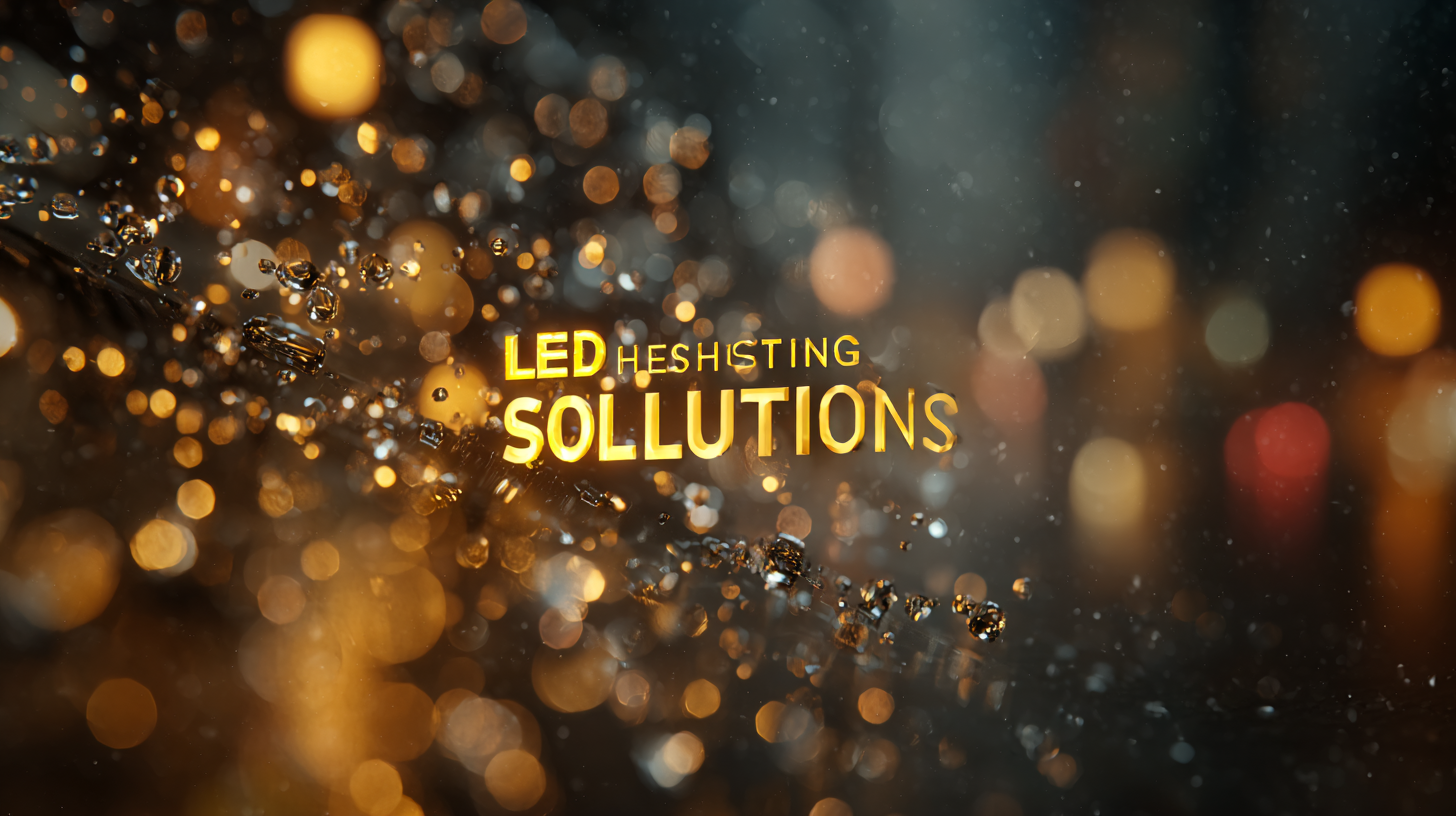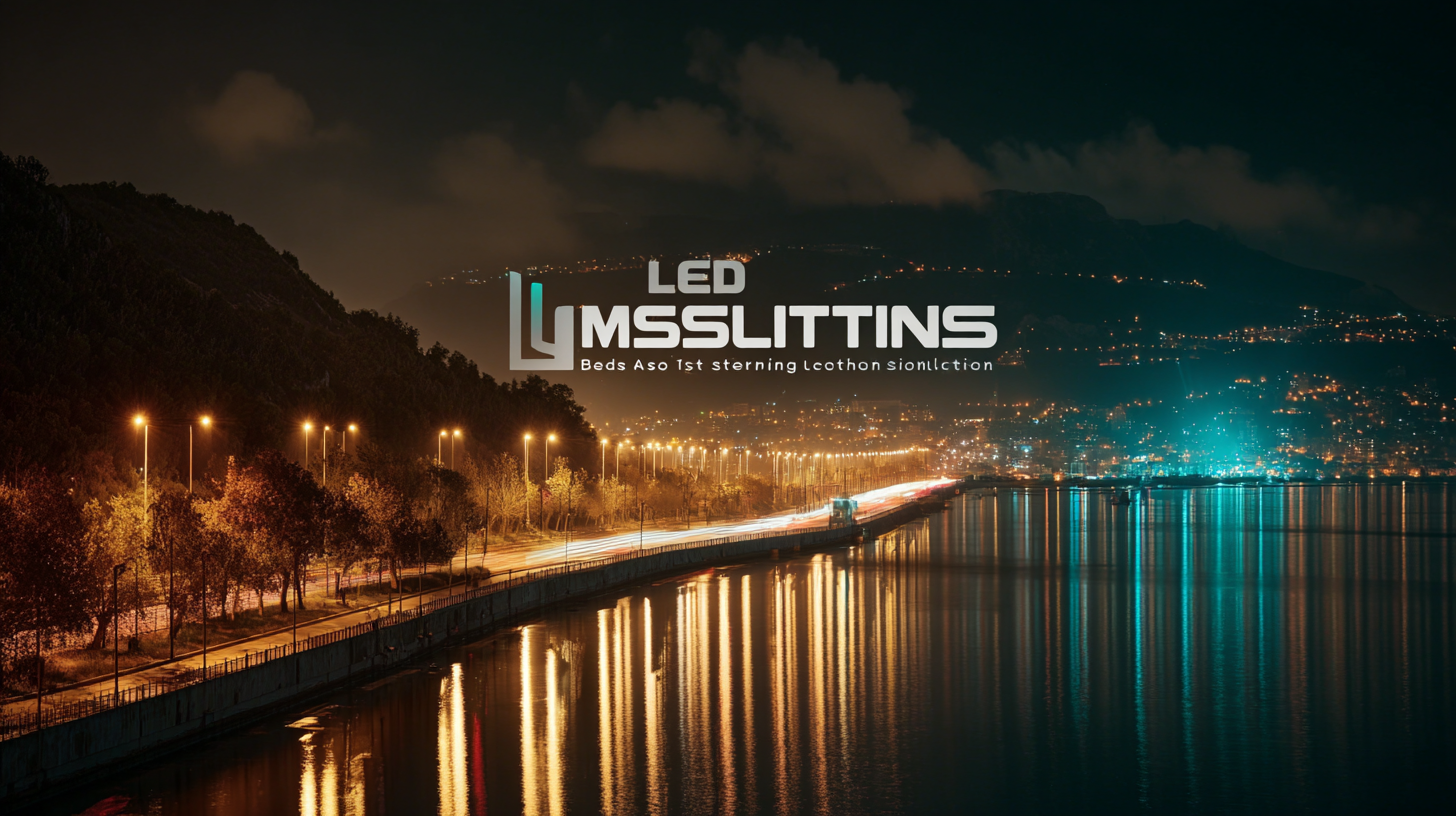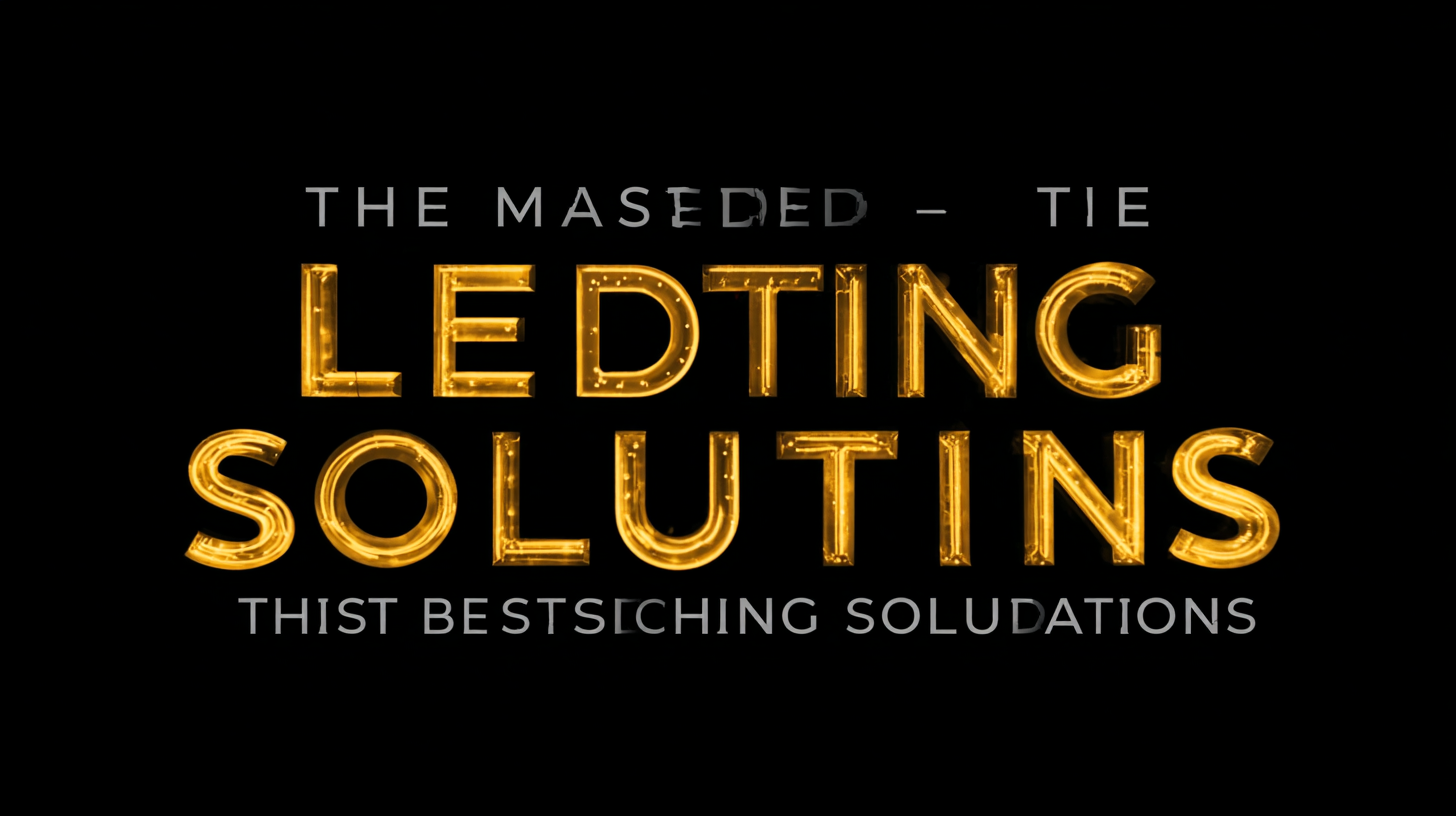Edison LED Lighting
Projects
Mastering the Art of Choosing the Best LED Lighting Solutions: A Comprehensive Tutorial
In today's rapidly evolving world, the quest for superior illumination has led to a growing interest in LED lighting solutions, renowned for their energy efficiency and long-lasting performance. As one of the leading manufacturers globally, our world-class Chinese factories are at the forefront of this innovation, providing exceptional products that meet the diverse needs of consumers and businesses alike.

This comprehensive tutorial aims to guide you through the essential considerations for selecting the best LED lighting solutions tailored to your specific requirements. From understanding the technical specifications to exploring the latest trends in design and application, we will equip you with the knowledge needed to master the art of lighting selection.
Join us as we delve into the intricacies of LED lighting, shedding light on how to enhance your spaces while embracing sustainability and style.
Understanding LED Lighting: Key Benefits and Advantages
When considering LED lighting solutions, it's crucial to understand the numerous benefits and advantages they offer. LED technology has evolved dramatically, with the U.S. Department of Energy reporting that LED lighting can be up to 75% more energy-efficient than traditional incandescent bulbs. This efficiency not only leads to significant reductions in energy consumption but also translates into lower utility bills for both residential and commercial users. The longevity of LED lights is another compelling advantage; they can last up to 25,000 hours, significantly outpacing conventional bulbs that typically last around 1,000 hours.
In addition to energy efficiency and longevity, LED lighting provides superior quality of light. Studies have shown that LED lights offer better color accuracy and a broader spectrum, enhancing visual clarity and comfort. According to a report from the Lighting Research Center, the consistent use of LED lighting can improve the overall ambiance of a space, which is particularly beneficial in retail environments where optimal lighting can influence consumer behavior. With benefits ranging from cost savings to improved aesthetics, understanding the advantages of LED lighting is essential for making informed decisions about modern lighting solutions.
Types of LED Lighting Products: A Detailed Overview
When it comes to selecting the ideal LED lighting solutions, understanding the various types of LED products is crucial. First up are LED bulbs, which are the most common type for residential use. Available in various shapes and sizes, they can seamlessly replace traditional incandescent or CFL bulbs, providing energy savings and longer lifespans.
 Beyond standard bulbs, there are also specialty LEDs, such as flood lights and dimmable options, which cater to specific lighting needs in both indoor and outdoor settings.
Beyond standard bulbs, there are also specialty LEDs, such as flood lights and dimmable options, which cater to specific lighting needs in both indoor and outdoor settings.
Another important category is LED strips or tape, which offer versatility and flexibility for creative lighting designs. These strips can be cut to size and easily installed, making them perfect for accent lighting, under cabinets, or along architectural features. In addition, panel lights are increasingly popular in commercial spaces due to their sleek design and ability to distribute light evenly across large areas. Understanding these diverse options can help you make an informed choice that enhances both aesthetics and functionality in your space.
Factors to Consider When Choosing LED Solutions
When selecting the best LED lighting solutions for horticulture, several crucial factors come into play. First, it’s essential to consider the spectrum of light emitted by the LEDs. Different plants have varied light requirements depending on their growth stages—seedling, vegetative, and flowering. Choosing a full-spectrum LED light can help ensure that your plants receive the appropriate wavelengths for optimal growth, aiding in photosynthesis and overall health.
Another important aspect to evaluate is the efficiency of the lighting system. Look for LEDs that provide high light output while consuming minimal power. This not only reduces electricity costs but also contributes to a more sustainable growing environment. It's also vital to assess the durability and heat output of the LEDs; lower heat emissions can help maintain ideal growing temperatures, while robust fixtures will ensure longevity and decreased replacement costs.
Finally, consider the initial investment versus long-term savings. Although high-quality LED lights may require a higher upfront investment, their energy efficiency and longevity can lead to substantial savings over time. By weighing these factors carefully, you can make an informed decision that enhances your horticultural practices and boosts yield.
Applications of LED Lighting: Where and How to Use Different Types
LED lighting has revolutionized the way we illuminate our spaces, offering versatility across various applications. In residential settings, LED bulbs are perfect for both ambient and task lighting. For instance, warm white LEDs can create a cozy atmosphere in living rooms, while brighter, cooler LEDs are ideal for kitchens and home offices where clarity is paramount. Additionally, smart LED technology allows for custom lighting schemes, enabling homeowners to adjust brightness and color temperature to suit different activities and moods.

In commercial and industrial environments, the advantages of LED lighting become even more pronounced. High-bay LED fixtures are commonly used in warehouses and large retail spaces, providing efficient and long-lasting illumination that significantly reduces energy costs. Moreover, outdoor LED lights enhance safety and security, illuminating parking lots and building exteriors with bright and effective lighting. With options for waterproof and durable designs, LEDs are also suitable for outdoor venues, ensuring visibility in all weather conditions. As technology continues to evolve, LED lighting solutions will expand even further, meeting diverse needs across different sectors.
Future Trends in LED Technology: What to Expect and Prepare For
As we move deeper into the 21st century, LED technology continues to evolve, pushing boundaries and offering unprecedented energy efficiency. Future trends in LED technology are set to revolutionize how we perceive lighting. Smart lighting systems integrated with IoT will allow users to control their lighting through mobile devices, creating personalized environments that can adapt to their moods and activities. This advancement not only enhances convenience but also contributes to energy savings, further supporting sustainability goals.
In addition to smart applications, advancements in LED materials are expected to lead to improved color accuracy and light quality. This will benefit various industries, from retail to healthcare, where proper lighting plays a crucial role in enhancing products' appearance and supporting patient well-being. Furthermore, the emergence of organic LEDs (OLEDs) presents exciting possibilities for flexible, lightweight, and scalable lighting solutions, paving the way for innovative designs in architecture and interior decor. As we prepare for these developments, staying informed about the latest trends will enable consumers and businesses alike to make educated decisions in optimizing their lighting solutions.
